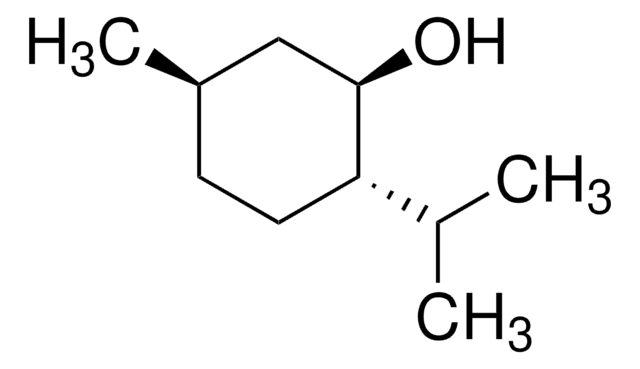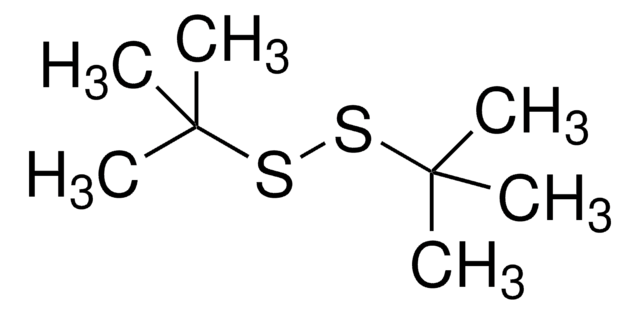149225
Dipropyl disulfide
98%
Sinónimos:
Propyl disulfide
About This Item
Productos recomendados
Nivel de calidad
Análisis
98%
formulario
liquid
índice de refracción
n20/D 1.497 (lit.)
bp
195-196 °C (lit.)
mp
−86 °C (lit.)
densidad
0.96 g/mL at 25 °C (lit.)
grupo funcional
disulfide
cadena SMILES
CCCSSCCC
InChI
1S/C6H14S2/c1-3-5-7-8-6-4-2/h3-6H2,1-2H3
Clave InChI
ALVPFGSHPUPROW-UHFFFAOYSA-N
¿Está buscando productos similares? Visita Guía de comparación de productos
Descripción general
Palabra de señalización
Warning
Frases de peligro
Consejos de prudencia
Clasificaciones de peligro
Aquatic Chronic 2 - Eye Irrit. 2 - Skin Irrit. 2 - STOT SE 3
Órganos de actuación
Respiratory system
Código de clase de almacenamiento
10 - Combustible liquids
Clase de riesgo para el agua (WGK)
WGK 3
Punto de inflamabilidad (°F)
147.2 °F - closed cup
Punto de inflamabilidad (°C)
64 °C - closed cup
Equipo de protección personal
Eyeshields, Gloves, multi-purpose combination respirator cartridge (US)
Elija entre una de las versiones más recientes:
¿Ya tiene este producto?
Encuentre la documentación para los productos que ha comprado recientemente en la Biblioteca de documentos.
Los clientes también vieron
Protocolos
Overcome challenges in synthesis and disulfide bond formation with protocols for Fmoc solid-phase peptide synthesis of peptides with cysteine and methionine.
Nuestro equipo de científicos tiene experiencia en todas las áreas de investigación: Ciencias de la vida, Ciencia de los materiales, Síntesis química, Cromatografía, Analítica y muchas otras.
Póngase en contacto con el Servicio técnico












